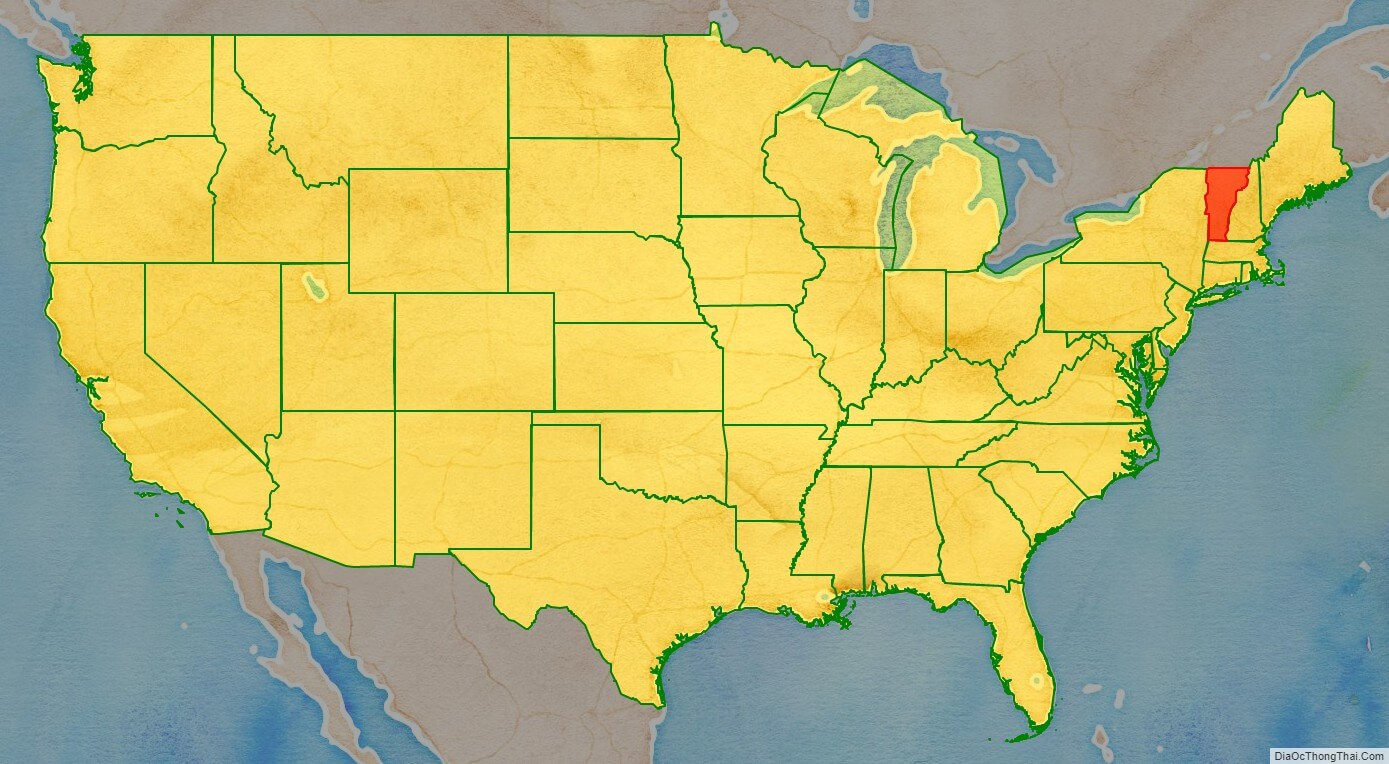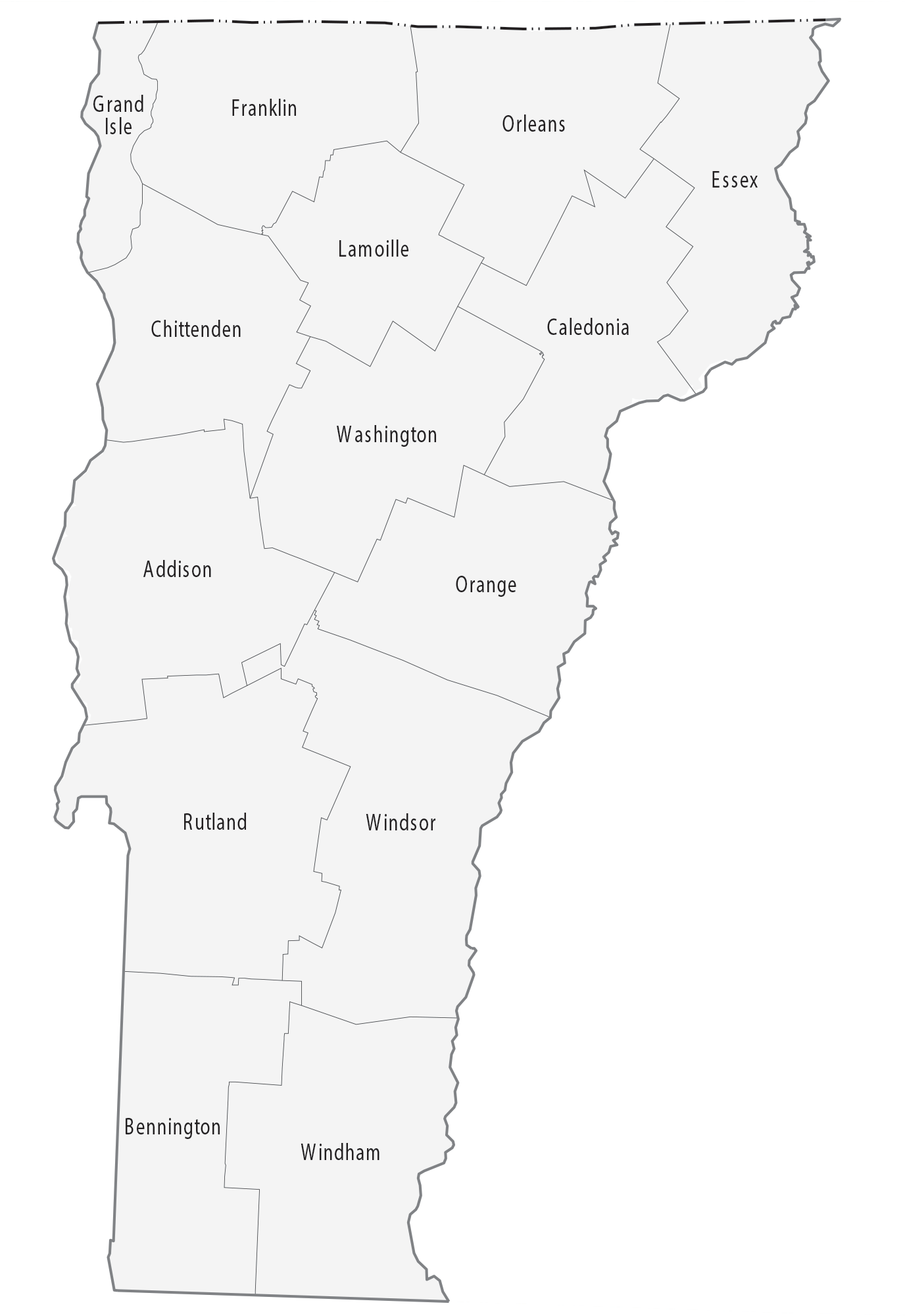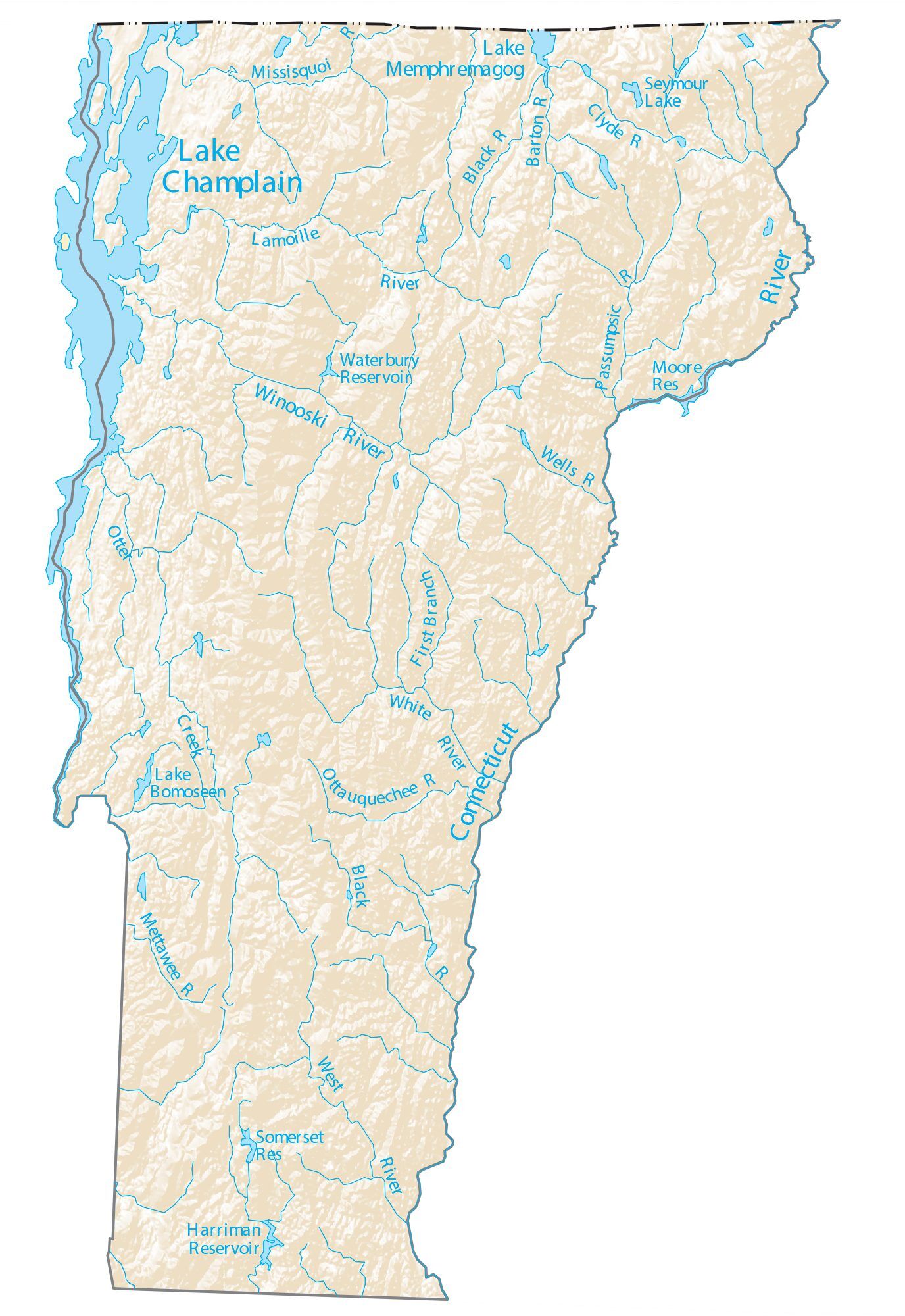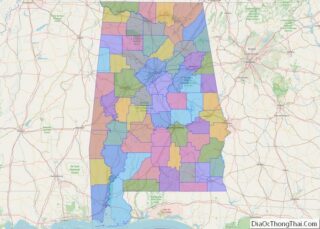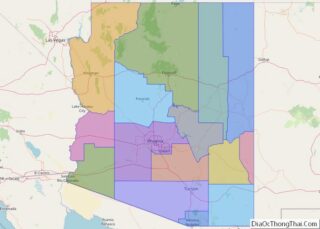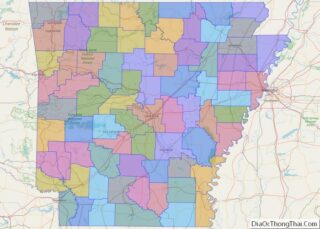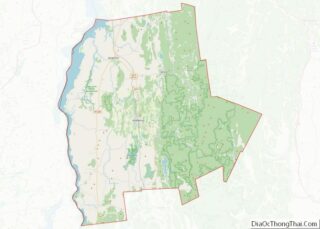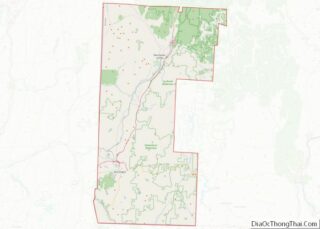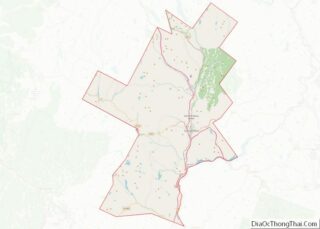Vermont (/vərˈmɒnt/ (listen)) is a state in the New England region of the Northeastern United States. Vermont is bordered by the states of Massachusetts to the south, New Hampshire to the east, New York to the west, and the Canadian province of Quebec to the north. Admitted to the Union in 1791 as the 14th state, it is the only state in New England not bordered by the Atlantic Ocean. According to the 2020 U.S. census, the state has a population of 643,503, ranking it the second least-populated in the U.S. after Wyoming. It is also the nation’s sixth-smallest state in area. The state’s capital Montpelier is the least-populous state capital in the U.S., while its most-populous city, Burlington, is the least-populous to be a state’s largest.
For some 12,000 years, indigenous peoples have inhabited this area. The competitive tribes of the Algonquian-speaking Abenaki and Iroquoian-speaking Mohawk were active in the area at the time of European encounter. During the 17th century, French colonists claimed the territory as part of the Kingdom of France’s colony of New France. After the Kingdom of Great Britain began to settle colonies to the south along the Atlantic coast, the two nations competed in North America in addition to Europe. After being defeated in 1763 in the Seven Years’ War, France ceded its territory east of the Mississippi River to Great Britain.
Thereafter, the nearby British Thirteen Colonies, especially the provinces of New Hampshire and New York, disputed the extent of the area called the New Hampshire Grants to the west of the Connecticut River, encompassing present-day Vermont. The provincial government of New York sold land grants to settlers in the region, which conflicted with earlier grants from the government of New Hampshire. The Green Mountain Boys militia protected the interests of the established New Hampshire land grant settlers against the newly arrived settlers with land titles granted by New York. Ultimately, a group of settlers with New Hampshire land grant titles established the Vermont Republic in 1777 as an independent state during the American Revolutionary War. The Vermont Republic abolished slavery before any of the other states.
During the mid-19th century, Vermont was a strong source of abolitionist sentiment, although it was also tied to King Cotton through the development of textile mills in the region, which relied on Southern cotton. It sent a significant contingent of soldiers to participate in the American Civil War.
The geography of the state is marked by the Green Mountains, which run north–south up the middle of the state, separating Lake Champlain and other valley terrain on the west from the Connecticut River Valley that defines much of its eastern border. A majority of its terrain is forested with hardwoods and conifers, and a majority of its open land is devoted to agriculture. The state’s climate is characterized by warm, humid summers and cold, snowy winters.
Vermont’s economic activity of $34 billion in 2018 ranked last on the list of U.S. states and territories by GDP but 34th in GDP per capita. In 2000, the state legislature was the first to recognize civil unions for same-sex couples. As of 2021, the state ranked 12th among U.S. states and territories on the United Nations Human Development Index.
| Before statehood: | Vermont Republic |
|---|---|
| Admitted to the Union: | March 4, 1791 (14th) |
| Capital: | Montpelier |
| Largest city: | Burlington |
| Largest metro and urban areas: | Burlington |
| Elevation: | 1,000 ft (300 m) |
| Total Area: | 9,616 sq mi (24,923 km) |
| Area Rank: | 45th |
| Total Population: | 643,503 |
| Population Rank: | 49th |
| Population Density: | 67.7/sq mi (26.1/km) |
| Population Density Rank: | 30th |
| Median Household Income: | $57,513 |
| Income Rank: | 26th |
| Demonym(s): | Vermonter |
| USPS abbreviation: | VT |
| ISO 3166 code: | US-VT |
| Website: | www.vermont.gov |
Online Interactive Map
Click on ![]() to view map in "full screen" mode.
to view map in "full screen" mode.
Vermont location map. Where is Vermont state?
Vermont Road Map
Vermont Map – Roads & Cities
Vermont Street Map
Vermont State Map – Places and Landmarks
Vermont Political Map

Vermont Lakes and Rivers Map
Geography
Vermont is located in the New England region of the northeastern United States and comprises 9,614 square miles (24,900 km), making it the 45th-largest state. It is the only state that does not have any buildings taller than 124 feet (38 m). Land comprises 9,250 square miles (24,000 km) and water comprises 365 square miles (950 km), making it the 43rd-largest in land area and the 47th in water area. In total area, it is larger than El Salvador and smaller than Haiti. It is the only landlocked state in New England, and it is the easternmost and the smallest in area of all landlocked states.
The Green Mountains in Vermont form a north–south spine running most of the length of the state, slightly west of its center. In the southwest portion of the state are located the Taconic Mountains. In the northwest, near Lake Champlain, is the fertile Champlain Valley. In the south of the valley is Lake Bomoseen.
The west bank of the Connecticut River marks the state’s eastern border with New Hampshire, though much of the river flows within New Hampshire’s territory. 41% of Vermont’s land area is part of the Connecticut River’s watershed.
Lake Champlain, the sixth-largest body of fresh water in the United States, separates Vermont from New York in the northwest portion of the state. From north to south, Vermont is 159 miles (256 km) long. Its greatest width, from east to west, is 89 miles (143 km) at the Canada–U.S. border; the narrowest width is 37 miles (60 km) near the Massachusetts border. The width averages 60.5 miles (97.4 km). The state’s geographic center is approximately three miles (4.8 km) east of Roxbury, in Washington County. There are fifteen U.S. federal border crossings between Vermont and Canada.
Several mountains have timberlines with delicate year-round alpine ecosystems, including Mount Mansfield, the highest mountain in the state; Killington Peak, the second-highest; Camel’s Hump, the state’s third-highest; and Mount Abraham, the fifth-highest peak. Areas in Vermont administered by the National Park Service include the Marsh-Billings-Rockefeller National Historical Park (in Woodstock) and the Appalachian National Scenic Trail.
The topography and climate make sections of Vermont subject to large-scale flooding. Incidents include the Great Vermont Flood of 1927, which killed 84 and damaged much of the state’s infrastructure, the flood of 1973, which covered many of the state’s roads in the southeast, and Tropical Storm Irene in 2011, which caused substantial damage throughout the state. In response to the 1927 flood, the Federal government funded construction of six flood control dams in the state, run by the Army Corps of Engineers. These extreme rain and flooding events are expected to get worse with climate change.
Cities
Vermont has ten incorporated cities.
The most populous city in Vermont is Burlington. Its metropolitan area is also the most populous in the state, with an estimate of 225,562 as of 2020.
Largest towns
Although these towns are large enough to be considered cities, they are not incorporated as such.
Climate
The annual mean temperature for the state is 43 °F (6 °C). Vermont has a humid continental climate, with muddy springs, in general a mild early summer, hot Augusts; it has colorful autumns: Vermont’s hills reveal red, orange, and (on sugar maples) gold foliage as cold weather approaches. Winters are colder at higher elevations. It has a Köppen climate classification of Dfb, a temperate continental climate.
The rural northeastern section known as the “Northeast Kingdom” often averages 10 °F (5.6 °C) colder than the southern areas of the state during winter. The annual snowfall averages between 60 and 100 inches (1,500 and 2,500 mm) depending on elevation. Vermont is the seventh coldest state in the country.
The highest recorded temperature was 105 °F (41 °C), at Vernon, on July 4, 1911. The lowest recorded temperature was −50 °F (−46 °C), at Bloomfield, on December 30, 1933; this is the lowest temperature recorded in New England alongside Big Black River, which recorded a verified −50 °F (−46 °C) in 2009. The agricultural growing season ranges from 120 to 180 days. The United States Department of Agriculture plant hardiness zones for the state range between zone 3b, no colder than −35 °F (−37 °C), in the Northeast Kingdom and northern part of the state and zone 5b, no colder than −15 °F (−26 °C), in the southern part of the state. The state receives between 2,200 and 2,400 hours of sunshine annually. New England as a whole receives a range of less than 2,000 hours of sunshine in part of New Hampshire to as much as 2,600 hours of sunshine per year in Connecticut and Rhode Island.
Climate change in Vermont encompasses the effects of climate change, attributed to man-made increases in atmospheric carbon dioxide, in the U.S. state of Vermont.
The state is already seeing effects of climate change that affect its ecosystems, economy and public health. According to the Vermont state government, rainfall has significantly increased in the last 50 years, storms and flooding have increased, and winters have become warmer and shorter. These changes have led to significant impacts on both the winter tourism industry, and a decline in critical agricultural and woodland industries like maple sugaring.
The state openly acknowledges and is developing programs that respond to global warming. Vermont was one of the first states in the United States to adopt greenhouse gas emissions goals in 2006.
Geology
There are five distinct physiographic regions of Vermont. Categorized by geological and physical attributes, they are the Northeastern Highlands, the Green Mountains, the Taconic Mountains, the Champlain Lowlands, and the Vermont Piedmont.
About 500 million years ago, Vermont was part of Laurentia and located in the tropics. The central and southern Green Mountain range include the oldest rocks in Vermont, formed about one billion years ago during the first mountain building period (or orogeny). Subsequently, about 400 million years ago, the second mountain building period created Green Mountain peaks that were 15,000–20,000 feet (4,600–6,100 m) tall, three to four times their current height and comparable to the Himalayas. The geological pressures that created those peaks remain evident as the Champlain Thrust, running north–south to the west of the mountains (now the eastern shore of Lake Champlain). It is an example of geological fault thrusting where bedrock is pushed over the newer rock formation.
As a result of tectonic formation, Vermont east of the Green Mountains tends to be formed from rocks produced in the Silurian and Devonian periods, and western Vermont mainly from the older Pre-Cambrian and Cambrian material. Several large deposits within the state contain granite. The remains of the Chazy Formation can be observed in Isle La Motte. It was one of the first tropical reefs. It is the site of the limestone Fisk Quarry, which contains a collection of ancient marine fossils, such as stromatoporoids, that date to 200 million years ago. At one point, Vermont is believed to have been connected to Africa (Pangaea); the fossils found and the rock formations found on the coasts in both Africa and America are evidence affirming the Pangaea theory.
In the past four centuries, Vermont has experienced a few earthquakes, rarely centered under the state. The highest ranked, in 1952, had a Richter magnitude scale 6.0 and was based in Canada.
Fauna
The state contains 41 species of reptiles and amphibians (including the spring peeper), 89 species of fish, of which 12 are non native; 193 species of breeding birds, 58 species of mammals (including black bears, eastern chipmunks, coyotes, fishers, red and gray foxes, porcupines, and woodchucks), more than 15,000 insect species (including luna moths), and 2,000 higher plant species, plus fungi, algae, and 75 different types of natural communities. Vermont contains one species of venomous snake, the timber rattlesnake, which is confined to a few acres in western Rutland County.
Wildlife has suffered because of human development of the state. By the mid-19th century, wild turkeys were exterminated in the state through overhunting and destruction of habitat. Sixteen were re-introduced in 1969, and had grown to a flock estimated to number 45,000 in 2009. In 2013, hunters killed 6,968 of these. Since 1970, reduction of farmland has resulted in reduced environment for, and resulted in a decline in numbers of various shrubland birds, including the American woodcock, brown thrasher, eastern towhee, willow flycatcher, golden-winged warbler, blue-winged warbler, field sparrow, and Baltimore oriole. Ospreys, whose eggs were previously damaged by DDT, began to reappear in 1998 and by 2010 were no longer endangered in the state.
Several species have declined or disappeared from the state, including bats, many of which have been killed by white-nose syndrome, the New England cottontail, out-competed by the eastern cottontail rabbit, and the yellow-banded bumblebee, gone as one of 19 species of bee in decline.
Invasive species and organisms include the Asian spotted-wing drosophila, a destroyer of crops, and eastern equine encephalitis virus whose antibodies were found in moose or deer in each of Vermont’s counties.
Flora
Vermont is in the temperate broadleaf and mixed forests biome. Much of the state, in particular the Green Mountains, is covered by the conifers and northern hardwoods of the New England-Acadian forests. The western border with New York and the area around Lake Champlain lies within the Eastern Great Lakes lowland forests. The southwest corner of the state and parts of the Connecticut River are covered by northeastern coastal forests of mixed oak.
Invasive wild honeysuckle has been deemed a threat to the state’s forests, native species of plants, and wildlife. Many of Vermont’s rivers, including the Winooski River, have been subjected to man-made barriers to prevent flooding.
Climate change appears to be affecting the maple sugar industry. Sugar maples have been subject to stress by acid rain, asian longhorn beetles, and pear thrips. In 2011, the deer herd had grown too large for habitat, and many resorted to eating bark to survive the winter, destroying trees in the process. In addition, the sugar maples need a certain period of cold to produce sap for maple syrup. The time to tap these trees has shrunk to one week in some years. The tree may be replaced by the more aggressive Norway maples, in effect forcing the sugar maples to “migrate” north to Canada.
Vermont Physical Map
Vermont Topographic Map
Vermont Satellite Map
Others printable maps
Vermont Outline Map
Blank Vermont County Map
See also
Map of Vermont State and its subdivision: Map of other states:- Alabama
- Alaska
- Arizona
- Arkansas
- California
- Colorado
- Connecticut
- Delaware
- District of Columbia
- Florida
- Georgia
- Hawaii
- Idaho
- Illinois
- Indiana
- Iowa
- Kansas
- Kentucky
- Louisiana
- Maine
- Maryland
- Massachusetts
- Michigan
- Minnesota
- Mississippi
- Missouri
- Montana
- Nebraska
- Nevada
- New Hampshire
- New Jersey
- New Mexico
- New York
- North Carolina
- North Dakota
- Ohio
- Oklahoma
- Oregon
- Pennsylvania
- Rhode Island
- South Carolina
- South Dakota
- Tennessee
- Texas
- Utah
- Vermont
- Virginia
- Washington
- West Virginia
- Wisconsin
- Wyoming
